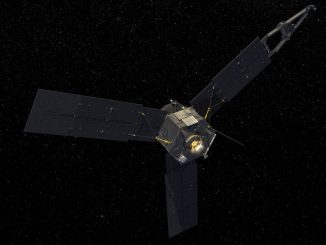
Jupiter

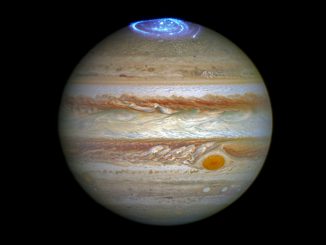
Hubble captures vivid aurorae in Jupiter’s atmosphere
Astronomers are using the NASA/ESA Hubble Space Telescope to study aurorae — stunning light shows in a planet’s atmosphere — on the poles of the largest planet in the solar system, Jupiter. This observation program is supported by measurements made by NASA’s Juno spacecraft, shortly to arrive at the gas giant.
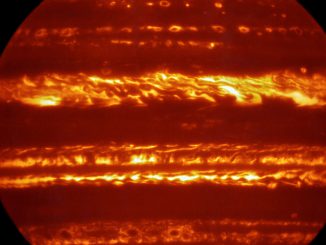
Spectacular VLT images of Jupiter presented before Juno’s arrival
In preparation for the imminent arrival of NASA’s Juno spacecraft, astronomers have used ESO’s Very Large Telescope to obtain spectacular new infrared images of Jupiter as part of a campaign to create high-resolution maps of the giant planet. These observations will help astronomers to better understand the gas giant ahead of Juno’s close encounter next month.
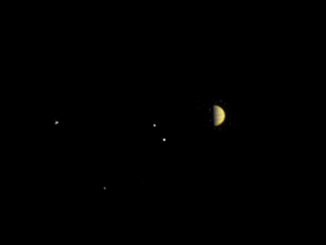
Jupiter and its satellites seen by ‘people’s camera’ on Juno probe
The visible camera on NASA’s Juno spacecraft is capturing a time-lapse movie of Jupiter and its four largest moons as the orbiter dives toward the giant planet for a 4 July rendezvous, and officials have released a first taste of the views armchair scientists and space enthusiasts can anticipate over the coming weeks and months.
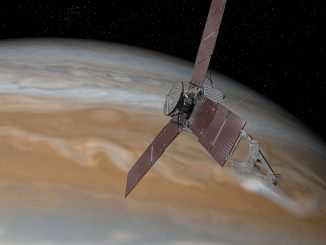
NASA’s Juno spacecraft closing in on Jupiter for 4 July orbit insertion
On 4 July, NASA will fly a solar-powered spacecraft the size of a basketball court within 2,900 miles of the cloud tops of our solar system’s largest planet, Jupiter. Over the past two weeks, several milestones occurred that were key to a successful 35-minute burn of its rocket motor, which will place the robotic explorer into a polar orbit around the gas giant.
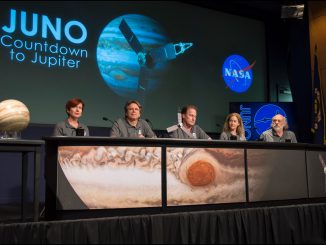
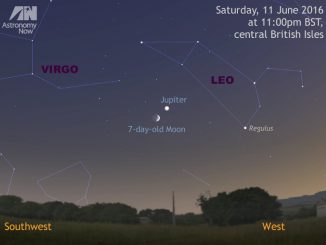
See the Moon and Jupiter get close on 11 June
As dusk fades to dark on Saturday, 11 June, observers in the British Isles should look low in the western sky to see the 7-day-old waxing crescent Moon and Jupiter less than 3 degrees apart, within the same binocular field of view. Get your observations in now as the solar system’s largest planet is poised to leave the celestial stage during the summer.
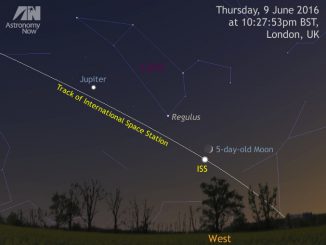
See the International Space Station over the UK
In recent nights, observers in the UK and Western Europe have seen the International Space Station (ISS) as a bright naked-eye ‘star’ moving slowly across the sky from west to east. On Thursday, 9 June, London is favoured for some close approaches of the ISS to the Moon, Jupiter and Saturn. If you see the Station, spare a thought for Tim Peake and the Expedition 47 crew on board!
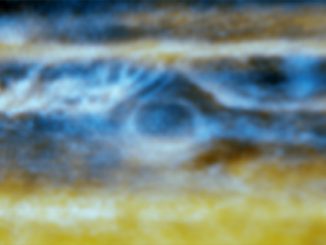
VLA radio map reveals what lies deep below Jupiter’s visible clouds
Observations with the National Science Foundation’s Very Large Array (VLA) have given astronomers an unprecedented look into the atmosphere of Jupiter. The scientists used the VLA to study the dynamics of Jupiter’s atmosphere from the visible cloud surfaces down to about 60 miles (100 kilometres) below the clouds.
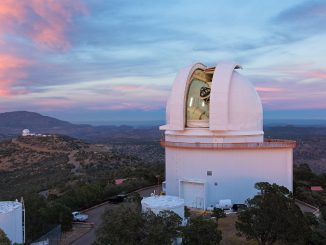
Astronomers find giant planet around very young star CI Tauri
Contradicting the long-standing idea that large Jupiter-mass planets take a minimum of 10 million years to form, astronomers have just announced the discovery of a giant planet in close orbit around a 2 million-year-old star that still retains a disc of circumstellar gas and dust. CI Tau b is at least eight times larger than Jupiter and 450 light-years from Earth.
